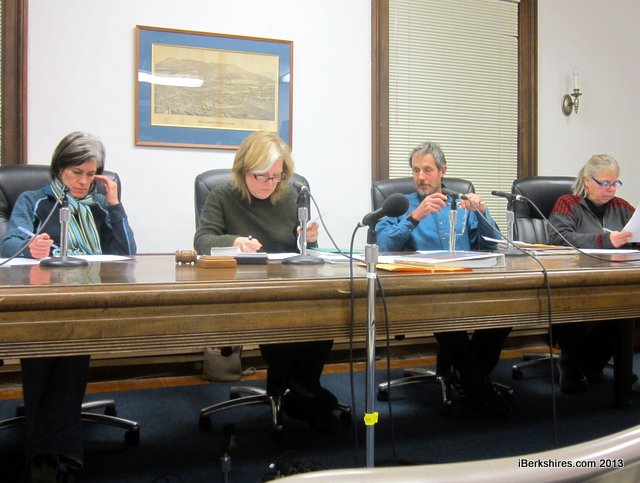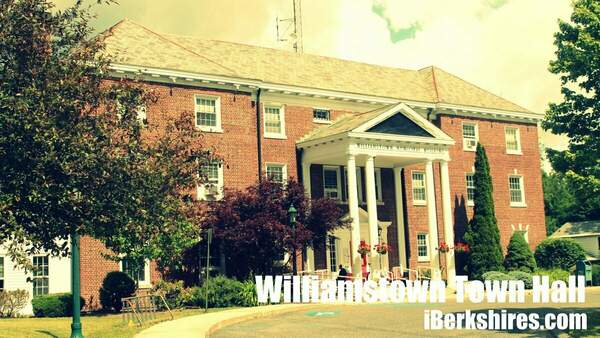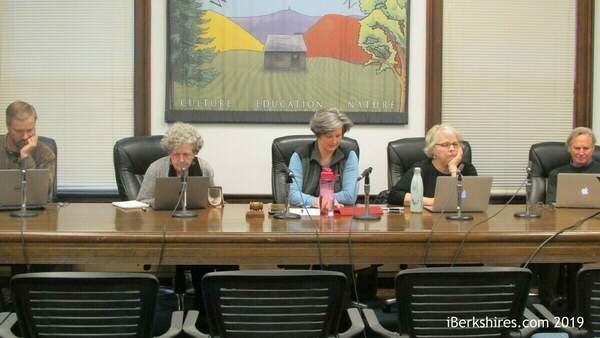Williamstown Ag Panel: Housing Talk Premature
|
The Agriculture Commission wondered about the wisdom of trading limited farmland for housing stock. |
WILLIAMSTOWN, Mass. — The Agriculture Commission continued to question Thursday the pace of plans to develop affordable housing on a 30-acre town-owned parcel of conserved land, part of which is currently is being farmed.
"It's a little hard dealing with these things because we're not just putting the cart before the horse, we're putting the plans for the cart before the horse," Commissioner Kim Wells said during a lengthy discussion of plans to build some form of subsidized housing on the land of Stratton Road commonly referred to as the Lowry Property.
Wells, who operates East Mountain Farm, currently hays the land at Lowry and is the Ag Commission's liason to the Affordable Housing Committee.
While emphasizing on several occasions that he is in favor of developing more affordable housing in town, Wells questioned the wisdom of building anything on prime farmland.
And he said it is premature to talk about how the town could use Federal Emergency Management Agency grant money to build houses that are intended to offer options to residents of the flood-damaged Spruces Mobile Home Park. The park would be closed as a condition of the Hazard Mitigation Grant being sought by park owner Morgan Management in cooperation with the town.
"We don't know if the grant will come through," Wells said. "And we don't know if the townspeople will release the land from conservation."
And another commissioner said she did not know why the town spent money on a site assessment at Lowry.
"I think it's odd that they used public money to develop plans for land that is under Con Comm's control," said Sarah Gardner, who serves as an alternate on the commission but is a member of the Conservation Commission.
"It doesn't seem like that's a good use for town money."
The Affordable Housing Committee and Affordable Housing Trust hired engineering firm Guntlow and Associates to take a preliminary look at Lowry. That study yielded a conceptual drawing of how up to 40 single-family homes could be situated on the parcel.
Gardner also questioned why those housing panels are funding "another Lowry study" by John Ryan, who looked at the property for the town for a study written in 2003.
In an email to iBerkshires after Thursday's meeting, Affordable Housing Committee Chairwoman Catherine Yamamoto clarified that Ryan, who met with her panel by teleconference on Wednesday, is not studying the Lowry property this time around. He is doing a demographic study.
"John Ryan will conduct a Housing Needs Assessment," Yamamoto wrote. "He will analyze the scale and nature of housing needs across a range of types (rental, ownership, elderly, family,individuals, special needs). This will provide the AHC with current, meaningful information and analysis to inform our efforts to address both the immediate needs created by the loss of housing at the Spruces, as well as the range of current and anticipated rental and ownership needs experienced by residents and workers in the community.
"We also expect that the information gathered and analyzed by Mr. Ryan will aid us in looking for practical and specific options to effectively address those needs given both market conditions and funding realities."
As for the "Spruces-Lowry" plan, both ends are in doubt, as Wells mentioned on Thursday. The town and Morgan Management are still awaiting word from FEMA and MEMA to see whether the grant application will be accepted, and there is no date specified for that decision. And the Conservation Commission has yet to even discuss the plan since it was first proposed by Town Manager Peter Fohlin in November.
The Con Comm tentatively has set a Feb. 14 public forum on the issue. Any decision to release the land from conservation ultimately would require a vote of that panel and the approval of town meeting.
On Thursday, Wells asked why Con Comm has not taken up the issue.
"There's a lot of questions in town about why Con Comm hasn't responded to the letter from the Affordable Housing Committee or letters from private citizens," Wells said.
|
Kim Wells explains a map of the Lowry property. |
Gardner explained Con Comm Chairman Hank Art had two reasons for keeping Lowry off the agenda for all of the panel's meetings prior to February.
"No. 1, a lot of members have been absent in December and January," she said. "The chairman was away and the vice chairman was away, and it was felt that the issue was too important to discuss it without as many people as possible present.
"No. 2, there is some hope that by then it might be known whether we'll have the grant."
The grant, incidentally, is not tied to any proposed construction. Although the two inevitably have been linked since Fohlin's initial presentation on Nov. 13, he explained at that meeting and clarified in a subsequent interview that FEMA's only concern is that the money be spent to relocate the 66 households remaining in the park and dismantle the park. Relocation, Fohlin explained, might involve the residents moving out of town as far as FEMA is concerned.
Anything the town does with the remaining proceeds is the town's prerogative, but Fohlin indicated that the town feels a sense of duty to help develop comparable housing to what residents have enjoyed at the retirement community.
Most of the members of the Ag Comm followed Wells' lead and expressed support for developing affordable housing in town, but they questioned the wisdom of using open space. Wells suggested that the panel draft a position statement to consider at its Feb. 7 meeting that would express the commission's support for both housing and farmland preservation.
Much of Thursday's discussion involved the kind of housing developments the Ag Comm would support — developments on so-called brownfields sites like the former town garage site and the former PhoTech mill.
Both those town-owned sites are being pursued by the Affordable Housing Committee. But Wells suggested that the town needs to consider acquiring properties specifically for affordable housing, and Commissioner Leslie Reed-Evans suggested "in-fill" development — building or re-habbing housing on a lot-by-lot basis rather than the kind of large-scale development envisioned for Lowry.
In other business on Thursday, Phelps announced that the Ag Commission's new website, www.williamstownfarms.com, has been built and should be live within the next day or so. She appealed to any farmers in town to pass along photos that could be used on the site.
And the town's "Right to Farm Law" signs have been installed on Routes 7 and 43 and on North Hoosac Street, Phelps reported. She thanked Fohlin and all the town employees who made that installation possible.
Tags: affordable housing, farmland, Spruces,


.JPG)














